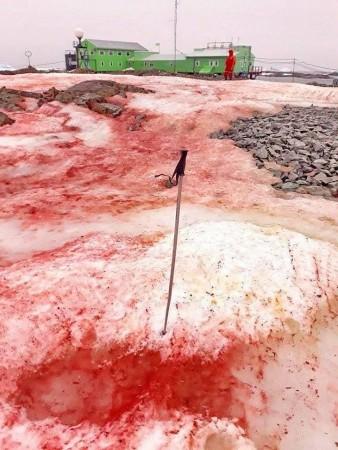People across the globe are astounded by Antarctica's 'Raspberry jam' snow, which has attracted a huge response over social media. A set of images is doing rounds on the social media that show Antarctica snow turning blood red.
The viral pictures have been taken from a place near a former British research station. The effect is reportedly due to microscopic algae, which can survive in freezing temperatures.
A Twitter user who shared the images had a caption along with them stating, "Shocking Images of Antarctica's Blood Red ice are an ominous sign of Climate change as the water around the icy continent is increasingly heating up Mike Hudema."
The mystery of 'raspberry jam' snow
Ukraine's Ministry of Education and Science also released the pictures on Facebook showing the phenomenon. The snow algae grow when weather conditions are favourable during summer months in Antarctica from October to February.

According to the ministry, a red carotene layer forms over the algae's cells, which helps protect them from the UV rays and produces red spots in the snow like "raspberry jam".
There was a report that appeared in the New York Times in 2016 stating similar facts. The report added that the summer sun when falls on these typically green algae, they start producing a natural sunscreen that paints the snow in shades of pink and red. It stays dormant when winter arrives.
Is there a reason to worry?
This tinted hue keeps the algae warm and acts as a sunscreen for them. The report further adds that the snow when gets darker from the tinge; starts absorbing more heat and starts to melt faster than it otherwise would and this is where the concern lies.
This month Antarctica has experienced a nine-day heatwave. The hottest temperature ever has also been recorded, which stands at a figure of 18.3C at Argentina's Esperanza research station.
NASA had released images last week showing that almost a quarter of one Antarctic island's snow cover was melted during the heatwave.
Mauri Pelto, a geologist at Nichols College in Massachusetts, told NASA's Earth Observatory that this is the first time when melt ponds are developing this quickly in Antarctica.

















